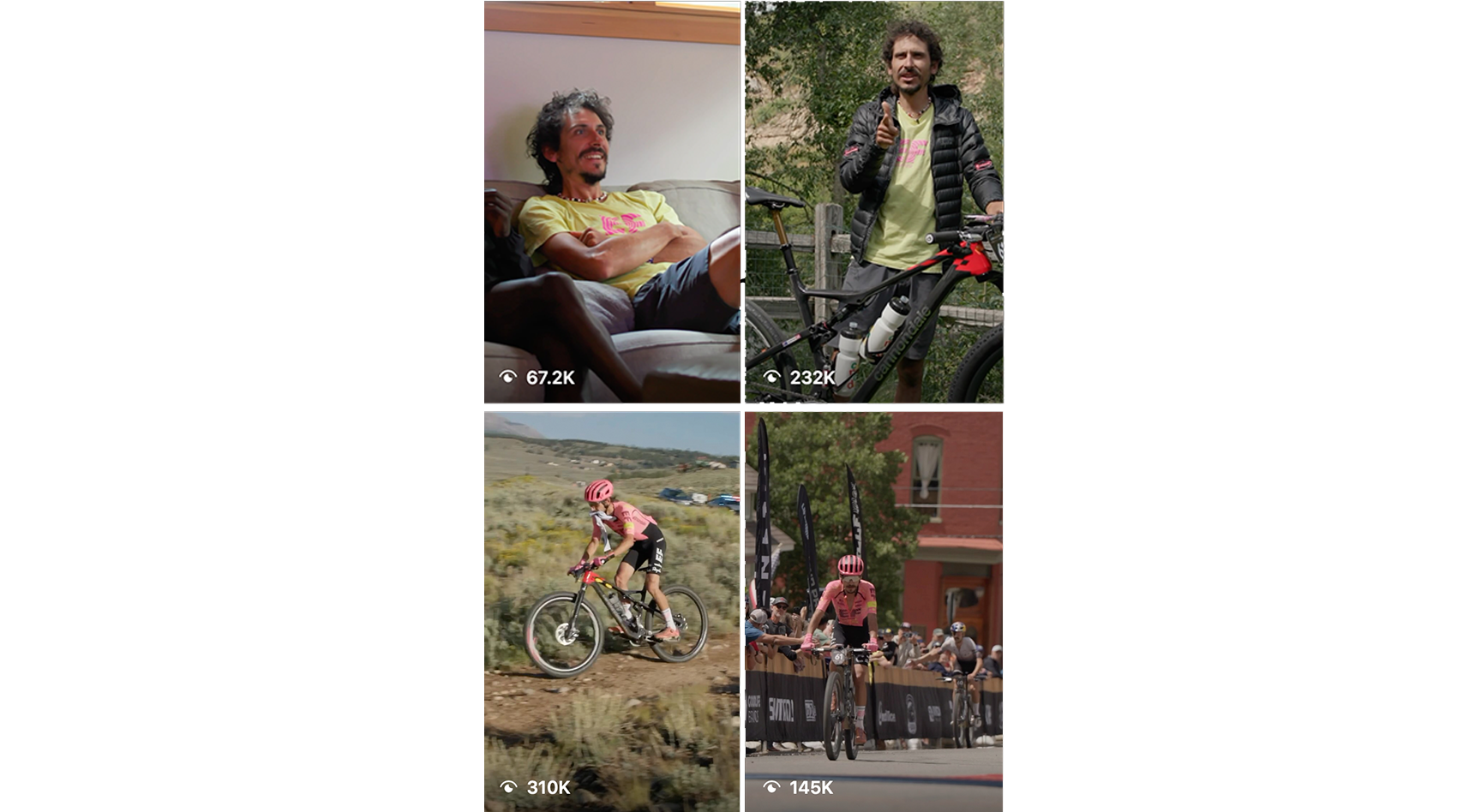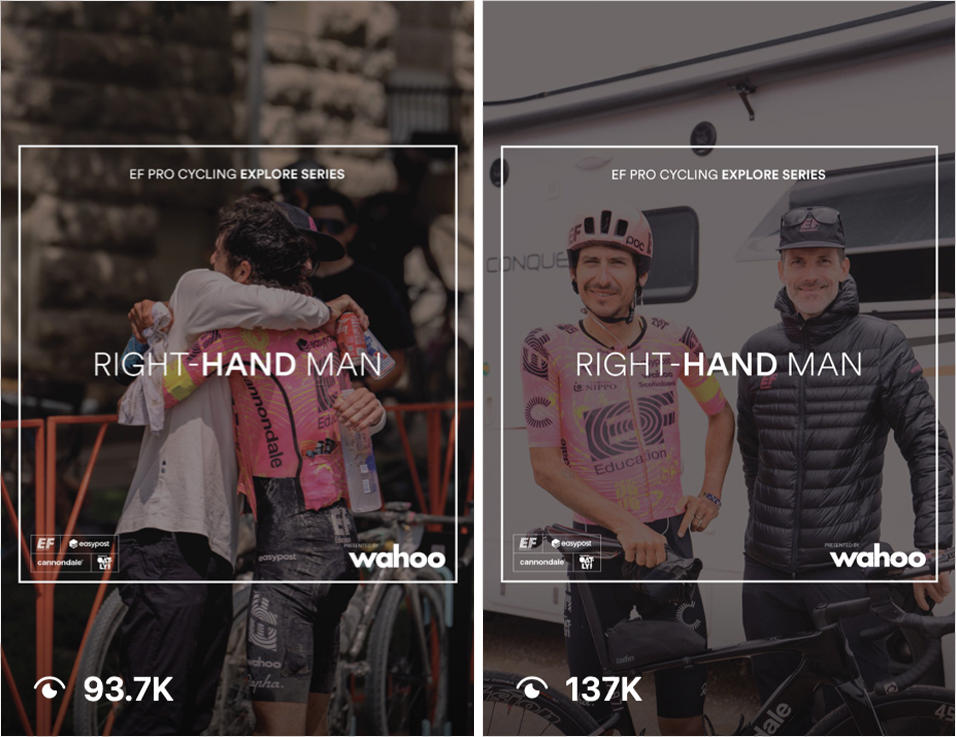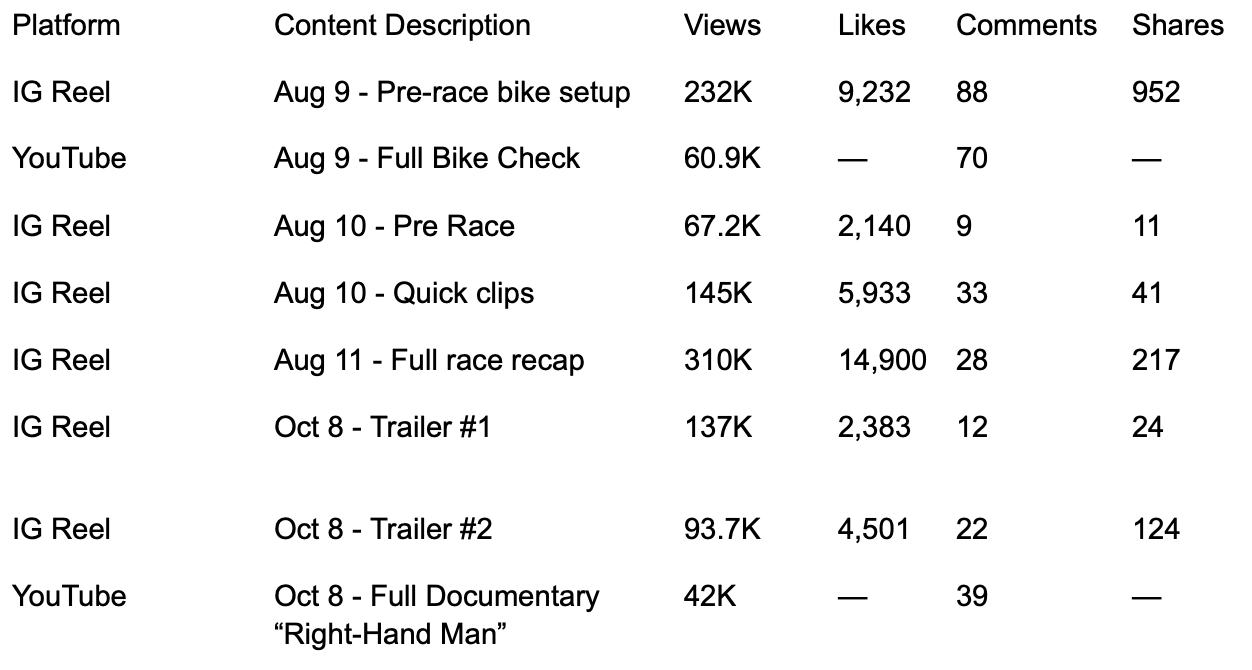Real-Time to Real Impact: The Long Game of Storytelling
Building a Story in the Moment
In today’s digital world, capturing a moment is easy. Making it matter is hard. When audiences scroll past a million clips a day, only the stories rooted in real moments, with emotional depth and strategic framing, actually resonate.
With Right-Hand Man, my team and I set out to turn real-time race coverage into something lasting. Working alongside EF Pro Cycling, we transformed our Leadville 100 event content into a deeply human documentary, and then used the documentary to reframe every moment we had captured in the field.
This is the story of how we turned reactive content into an intentional, emotional campaign, driven by the connection between athlete and mechanic, moment and memory, real-time footage and long-form storytelling.
Real-Time Storytelling with Purpose
We approached the Leadville 100 not just as filmmakers but as embedded storytellers. Every clip, every angle was shot with an eye toward character, emotion, and arc.
Leading into the event:
IG Reel (Aug 9, 2024): Lachlan’s pre-race bike setup (232K views, 9,232 likes, 88 comments, 952 shares)
YouTube (Aug 9, 2024): Full Bike Check video (60,929 views)
IG Reel (Aug 10, 2024): Casual pre-race reflection — “That was the day that was before Leadville.” (2,140 likes, 9 comments, 11 shares)
During the race:
IG Reel (Aug 10): Quick clips to get the content out ASAP (145K views, 5,933 likes, 33 comments, 41 shares)
IG Reel (Aug 11): Full race recap with emotional finish (310K views, 14.9K likes, 28 comments, 217 shares)
These posts did what real-time content does best: they captured attention and to tell a micro-story in the short 30-60 second window. However it did not paint a full picture that’s where the documentary came in.
The Film: Right-Hand Man
After the dust settled on Leadville, we went to work shaping the full story. Right-Hand Man wasn’t a recap. It was a tribute to the relationship between Lachlan Morton and Tom Hopper, a mechanic, mentor, and friend.
The documentary stitched together interviews, race footage, and moments viewers had already seen on social—now layered with emotional context. It gave meaning to the glances, effort, chaos, and camaraderie we had documented in real time.
Key Documentary Stats:
Released: October 8, 2024
Platform: EF Pro Cycling YouTube
Runtime: 8:44
Views: 42,079
The film connected the dots. Comments flooded in from people who had seen the real-time content weeks earlier, now moved by the backstory.
Reframing the Moments
The film wasn’t the end of the campaign—it was the beginning of a second wave.
When we launched Right-Hand Man, we rolled out:
IG Reel (Oct 8): Documentary trailer cut #1 - What’s Lachlan Morton without Tom Hopper? (137K views, 2,383 likes, 12 comments, 24 shares)
IG Reel (Oct 8): Documentary trailer cut #2 (93.7K views, 4,501 likes, 22 comments, 124 shares) This was cut by the extremely talented Taylor Kruse who is the in-house legend at EFPC
These weren’t just promotional clips—they were emotional context delivery tools. Attention had transformed into connection.
This shift wasn’t theoretical, it was visible in the data. The most emotional reel of the event coverage, the full recap on August 11, drew 14.9K likes and 217 shares, despite being released two days after the actual race. Why? Because by then, the audience wasn’t just watching a race, they were watching a relationship unfold.
What Made It Work?
Real-Time to Hook the Viewer
Short-form content gave us the spark. Viewers were drawn in by the action, the bike, the vibe. These clips reached a massive audience (~1M views across videos) and earned over 50K interactions.
Long-Form to Make It Matter
The film anchored the story. It gave context, stakes, and emotion to every short-form post. That’s why the engagement on our post-race content outperformed our pre-race material—not because it was fresher, but because it had meaning.
Story as a Loop, Not a Line
We didn’t treat long-form and short-form like start and finish. Instead, we created a circular narrative. Clips pointed to the film, and the film retroactively added depth to every clip. That loop drove replay, recirculation, and long-tail engagement.
The Results
Our content strategy drove consistent and measurable performance across both short-form and long-form formats. Below is a platform-by-platform breakdown of how our storytelling strategy played out
The metrics confirm our hypothesis: short-form content is the ignition, but long-form is the engine. By engineering a cohesive narrative arc, we converted passive viewers into invested followers. Each post didn’t just exist independently—it reinforced the ecosystem. The strategy wasn’t just about reach, it was about resonance.
Event Coverage Should Point to Something Bigger
Real-time content wins the moment. Long-form storytelling wins the memory. That’s what Right-Hand Man proved. When done right, short-form clips aren't just filler—they're seeds. And a well-told long-form story is what lets those seeds take root. The next time you’re shooting an event, don’t just think about what looks good in 15 seconds. Think about what’s going to mean something in five weeks. Think about what a fan might come back to. That’s the difference between coverage and storytelling. That’s what creates resonance. And that’s what we’re here to build.
*All statistics are as of May 13th 2025



